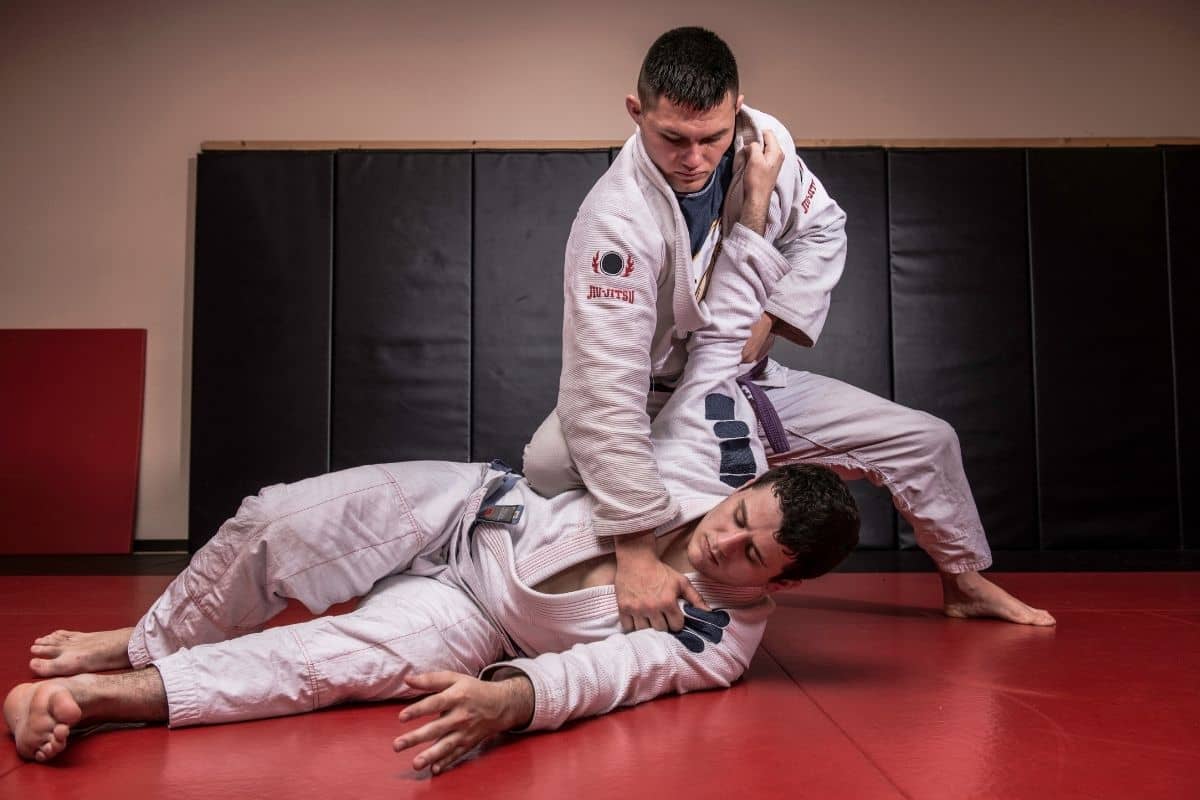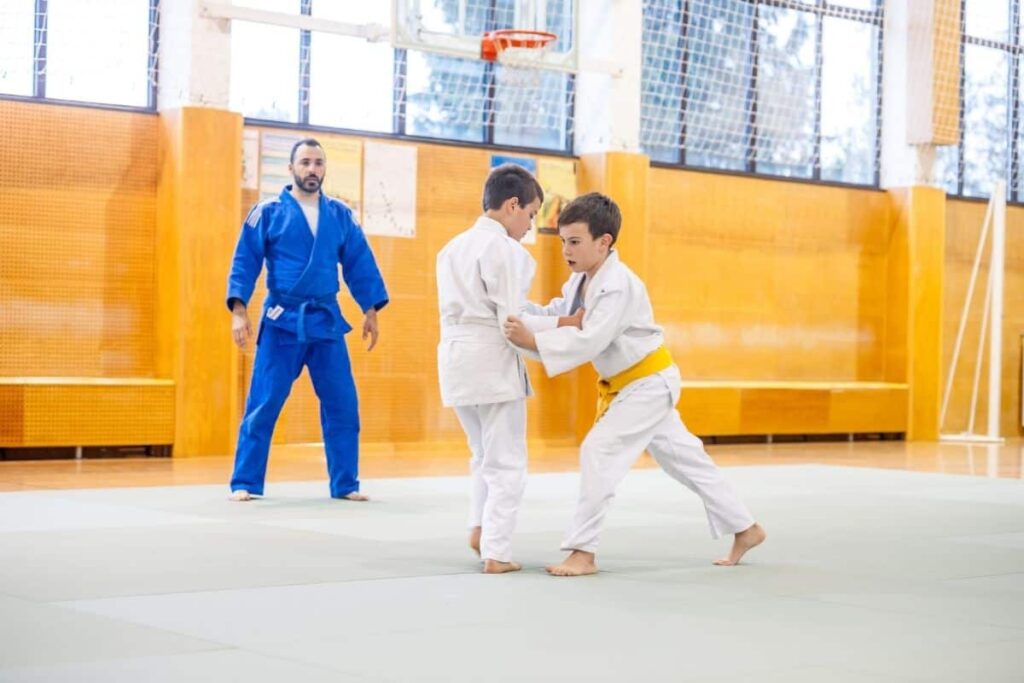Even though both Jiu-Jitsu and Judo are forms of grappling, there are many differences between them that you need to be aware of! Jiu-Jitsu and Judo are similar in a way that practitioners in a self-defense situation clinch with their opponents, work toward a takedown, and eventually make their opponent submit to them.
The main reason why Brazilian Jiu-Jitsu and Judo seem to be the same is that both are intertwined with one another due to the fact that they have common ancestors. However, there are differences between these two forms of martial arts that can’t and shouldn’t be overlooked.
Below, we’re going to discuss what sets these two fighting styles apart!
Origin
Jiu-Jitsu is a traditional and the oldest Japanese martial art form there is, while Judo is a modern form of Japanese martial art.
Judo derives from early Jiu-Jitsu, and it was created by professor Jigoro Kano. It was first introduced into the Olympic games in 1964, and it originated from the two Japanese characters Ju and Do, which mean “gentle” and “the way”. It follows many moral values and ethics, and it has its own traditions, customers, heritage, systems, and culture.
The philosophy of Judo is described as the training of the body by physical education, the teaching of morality, and the acquisition of knowledge. On the other hand, Brazilian Jiu-Jitsu promotes many standard philosophies that are promoted by other forms of martial arts, such as the weak overcoming the strong, self-defense, humility, and self-confidence.
Judo doesn’t involve weapons, equipment, applying pressure on the joints to overthrow an opponent, punching, striking, or kicking.
On the other hand, Jiu-Jitsu originated around 2500 and is a traditional form of Japanese martial arts. It was created by Takenouchi Hisamori, a lord and military tactician that came from Mimasaka Province. The term comes from the words Ju and Jitsu, which translate to “pliable, flexible, supple, soft, gentle” and “technique”.
Jiu-Jitsu works on the principles of using the energy of the attacker, and it doesn’t use the direct attack strategy. Instead, the student uses the energy of the opponent to make him fall down.

Popularity
Even though Judo is an Olympic event and predates Brazilian Jiu-Jitsu, it might be difficult to find an academy or gym that’s dedicated solely to the practice of Judo. While Judo is popular in many countries, this isn’t the case in the United States.
The reason being that judo organizations of the nation insisted to maintain the amateur status of their members to meet the requirements for the Olympics at the time. In the United States, other martial arts, such as Krav Maga, Brazilian Jiu-Jitsu, Kung Fu, and Karate, grew increasingly popular because of successful methods for commercialization and the entertainment industry.
Brazilian Jiu-Jitsu, on the other hand, became globally famous, especially in the United States, and it managed to infiltrate all forms of media, including radio, television, and film!
Attire
It might be easy to confuse a Judoka and a Brazilian Jiu-Jitsu practitioner at first glance. However, the attire for both martial arts have many differences. There’s a certain set of specifications that a Judogi must meet in order to be eligible for a match. Even though a gi is used for Brazilian Jiu-Jitsu practice, it doesn’t have the same degree of regulation as the Judogi.
Like the practitioners themselves, the designs and materials for Brazilian Jiu-Jitsu have become varied as well. Gis of different styles and colors are used at a Brazilian Jiu-Jitsu tournament. On the other hand, to ensure that there’s equal throwing capability between the opponents in a Judo match, the thickness and the length of the Judogi are taken into consideration.
The key difference in Judo and Brazilian Jiu-Jitsu comes down to the apparel. In Brazilian Jiu-Jitsu, when a gi isn’t used, practitioners need to rely on natural grips such as the ankles, wrists, neck, and head.
Techniques
Both Judo and Jiu-Jitsu can be practical for sport and for self-defense. However, there are differences when it comes to the techniques that these two martial arts utilize, such as submission techniques, defensive techniques, joint locking techniques, striking techniques, takedown techniques, throwing techniques, and so on.
The format of Jiu-Jitsu is usually less strict than a Judo competition, even though Jit-Jitsu also has rules that need to be followed. The range of submissions, the passivity of the sitting guard, or any takedown that involves grabbing the legs of the opponent aren’t permitted in a Judo Tournament. In Judo, the main focus is on the Judo takedown or throw.
On the other hand, competitors start on their feet when it comes to a Brazilian Jiu-Jitsu competition. However, how they decide to proceed depends on their preference. Even though Judo can be incorporated into their grappling, they’re also free to use techniques from wrestling, or even a sit/pull guard to bring the opponent to the ground.
Final Thoughts
Even though there are many similarities, such as techniques and philosophies that are shared between Judo and Brazilian Jiu-Jitsu, there are many things that the two martial arts don’t have in common.
The differences between Judo and Brazilian Jiu-Jitsu are quite apparent. Being able to examine and understand these major differences can really help you in becoming a knowledgeable martial artist. For more information, please feel free to keep exploring our site!

